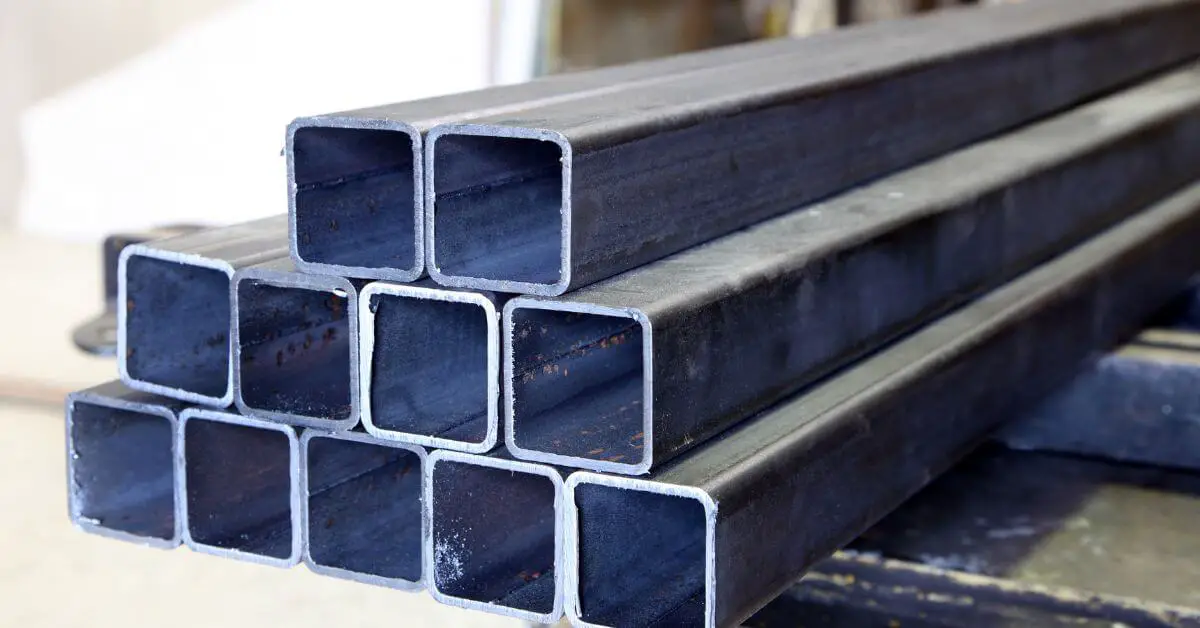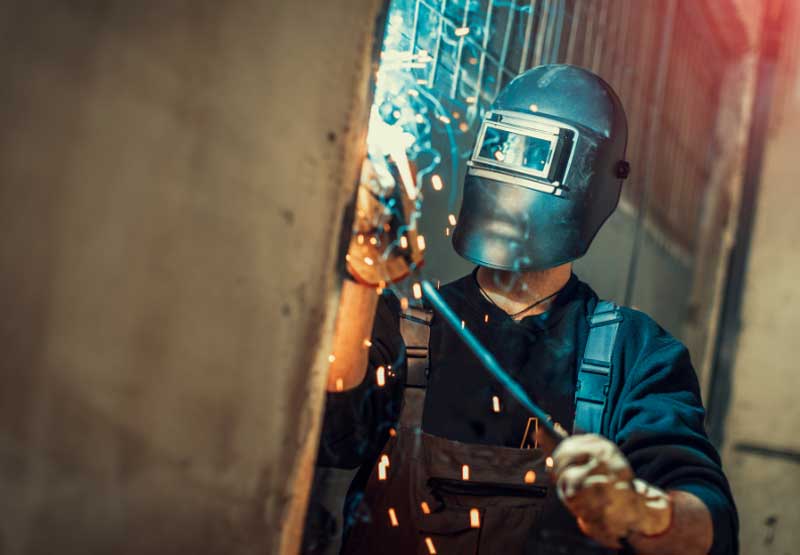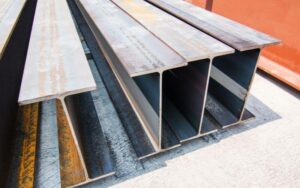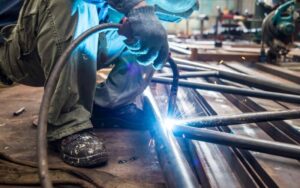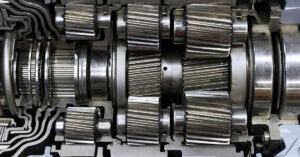4140 steel (or AISI 4140 steel as it is called in the USA) is a widely used metal due to its resistance to corrosion and other favorable properties. This article discusses 4140 steel in detail, its properties and uses in mechanical industries, and how to weld this alloy metal.
AISI SAE 4140 low-alloy steel containing chromium and molybdenum is widely used in general purpose high tensile steel for components like axles, shafts, bolts, gears, collars, and a wide variety of applications across the engineering and automotive industries.
4140 Steel and its Properties
4140 steel is a low alloy with chromium and molybdenum as strengthening agents. This steel also contains carbon, manganese, and other elements. The chromium in 4140 steel imparts superior hardness penetration, manganese improves its hardenability, and molybdenum makes it strong (tough).
Chromium and molybdenum make 4140 a better corrosion-resistant steel than ordinary alloy steels, making it a great choice for products exposed to harsh environments. Manganese and sulfur content in 4140 steel enhance its machinability.
The 4140 steel has good toughness, high strength, ductility, wear resistance, and a good strength-to-weight ratio. It has high fatigue strength, torsional strength, and good abrasion and impact resistance.
4140 steel is available in bars (different sections like round, hexagon, square, etc.), sheets, and other sections. It is available in the form of cold rolled rounds with added lead (a small quantity of 0.15 to 0.35%) to improve its machinability (however, this is not recommended for welding applications (welding fumes are not healthy) and any applications that involve heating above 400° F).
ASTM alloy 4140 steel bar, flat or plate material can be used for a wide variety of applications where greater toughness and wear resistance is needed over lower carbon grades.
Chemical Composition of 4140 Steel
|
Chemical composition of 4140 steel |
||||||||
| Element | Chromium
(Cr) |
Manganese
(Mn) |
Carbon
(C) |
Silicon
(Si) |
Molybdenum
(Mo) |
Sulfur
(S) |
Phosphorous
(P) |
Iron
(Fe) |
| Percentage | 0.80-1.10 | 0.75-1.0 | 0.38-0.43 | 0.15-0.3 | 0.15-0.25 | 0.04
Max |
0.035
Max |
Balance |
Important Physical Properties of 4140 Steel
|
Important physical properties of 4140 steel |
|||||
| Physical properties | Density | Melting point | Tensile strength | Yield strength | Brinell Hardness |
| Values | 7.85 g/Cm3 | 2580° F
(1416° C) |
95000 PSI
(655 Mpa) |
60200 PSI
(415 Mpa) |
197 |
Other Properties of 4140 Steel
Good Machinability
4140 low-alloy steel is amenable for machining processes like turning, drilling, hobbing, milling, tapping, etc. The machinability rating of 4140 steel is 65% (as per the AISI Standard), and as per AISI, a rating below 100 indicates it is difficult to machine compared to B-1112.
Simple shapes are easily machined following a normalizing treatment, while more complex shapes may require annealing. This steel grade’s carbon level may require a structure of coarse lamellar pearlite to coarse spheroidite for optimum machinability.
Forgeability
4140 low alloy steel has good ductility in the annealed condition and can be formed by conventional forging methods. However, 4140 is tougher than normal plain carbon steel and requires more pressure for forming.
SAE 4140 alloy steel can be cold forged in the annealed condition. The forging temperature of 4140 steel is between 1650° F and 2150° F, and a lower temperature (between this range) will give a microstructure of finer grain size.
4140 alloy steel is not recommended for forging below 1650° F. The forging should be cooled at a slow rate.
Weldability
You can weld 4140 steel by conventional welding techniques by taking precautions like pre-heating, but welding 4140 steel in heat-treated and tempered conditions is not recommended. We shall discuss the welding of 4140 steel in detail in the next subtopic.
Heat Treatment
4140-grade steel has 0.38 to 0.43% carbon and can be heat-treated to increase its hardness. It can be tempered and annealed. 4140 Steel can be heat treated by many processes, including hardening, tempering, annealing, nitriding, flame and induction hardening (soft core and hard case), stress relieving, etc.
Welding of 4140 in the hardened and tempered condition (as normally supplied) is not recommended and should be avoided if possible, as the mechanical properties will be altered within the weld heat-affected zone.
Its hardness rating varies depending on whether or not it has been heat treated but generally ranges from 26-65 Rockwell C scale (HRC). Its versatility makes this steel grade very popular among metalworkers and machinists.
For heat treatment, heat steel alloy 4140 to 870 C – 900 C, hold until temperature is uniform throughout the section, soak for 10 – 15 minutes, and cool in still air. Soak for 10 – 15 minutes per 25 mm section, and quench in oil, water, or polymer as required.
After heat treatment, this steel grade can have a Rockwell C rating between 58-65. This means that it can be hardened and tempered to meet specific requirements for strength and durability, depending on the application for which it will be used.
Does 4140 Steel Rust?
4140 steel has 0.8 – 1.10 % chromium and 0.15 – 0.25% molybdenum, making it more resistant to corrosion than ordinary alloy steel. But the percentage of chromium and molybdenum in 4140 steel is much less than in stainless steel, and hence corrosion resistance of 4140 is not as good as stainless steel.
So, 4140 steel has better resistance to rust than ordinary alloy steel, but it will rust if it comes in contact with water, moisture, and atmospheric air. The oxygen in the air reacts with the metal and forms iron oxide (rust). Regular cleaning and oiling of tools, jigs, and fixtures made from 4140 steel can keep them away from rusting.
4140 Steel Applications
Automobile industry: Connecting rods, axle shafts, gears, pinions, worms, crankshafts, shafts, cams, sprockets, valves, piston rods, ejector pins, racks, pinions, etc.
Tooling: Boring bars, jigs, fixtures, drill chucks, forming dies, milling and lathe spindles, collets, tool holders, sockets, the body of the chuck, molds, etc.
Machinery parts: Bolts and nuts, shafts, shafts of motors, couplings, guides, gears, racks, pinion, worms, slides, conveyor rollers, etc.
Hand tools: Crowbars, torsion bars, forging anvil, etc.
Oil and gas industries: Components machined from rods and forgings.
Aerospace industry: Different components, viz. shafts, gears, pinions, and other components, manufactured from rods and forgings.
Uses of 4140 Steel in Mechanical Industries
4140 steel is used across many engineering and automobile industries due to its good resistance to corrosion, toughness, fatigue strength, and resistance against impact and abrasion.
AISI 4140 steel is amenable to all machining, forging, and other processes and can be heat-treated. These qualities of 4140 steel make it suitable for components used in automobiles, tooling, jigs, fixtures, and machinery parts.
Welding of 4140 Steel
4140 is low alloy steel with a carbon percentage of 0.38 to 0.43. Due to the carbon content, welding 4140 is difficult since it tends to harden in the heat treatment zone and cracks in the welding.
Standard welding processes can weld 4140 steel; however, the following precautions are required to eliminate or minimize the welding problems.
- 4140 steel in the annealed state is recommended for welding.
- Welding 4140 steel in a hardened and tempered state is not recommended since welding changes the mechanical properties in the HAZ (heat-affected zone) area. Also, it may lead to welding cracks (even after pre-heating the workpieces).
- Use low hydrogen welding rods.
- Ensure a slow rate of cooling for the weldments.
- Pre-heating of welding sections is necessary before welding.
- 4140 steel weldments need to undergo a stress-relieving process.
Pre-heating
4140 metal workpieces in annealed condition must be pre-heated before welding. Recommended pre-heat temperature is 390° F-485° F for 4140 steel sections up to 1/2ʺ thickness and 485° F to 575° F for more than1/2ʺ thickness.
Further higher temperature is not encouraged, keeping the welder’s safety in mind. Pre-heating minimizes the formation of undesirable microstructure (Martensite/Bainite) in the heat-affected zone (HAZ).
In the case of multi-pass welding with 4140 steel, the inter-pass temperature should be above the minimum pre-heat temperature and below the tempering temperature of 4140 steel.
Welding Consumables for AISI 4140 Steel Welding
The selection of welding electrodes or filler wire is based on the chemical composition of 4140 steel. Experts recommend welding electrode E8018-B2 for SMAW welding and filler wire ER80S-B2 when welding with the MIG or TIG process.
The welding electrode E8018-B2 contains 1-1.5% chromium, and 0.4-0.65% molybdenum, apart from other elements. ER80S-B2 is a copper-coated solid filler wire and contains 1.3% chromium and 0.5% molybdenum, apart from other elements.
Sometimes welding electrode E7018 and filler wire ER70S-2 are also used for welding 4140 steel, but the chemical composition of these welding consumables is inferior to that of 4140 steel.
When the composition of the weld metal and the base metal is to be matched, welding consumable E8018-B2 or ER80S-B2 is used. For simple non-critical welding of 4140 steel, E7018 electrode (SMAW welding) and ER70S-2 solid filler wire (MIG and TIG welding) can be used.
The welding electrodes are to be baked as per AWS’s recommended procedure before using them for welding. Backing takes away the moisture absorbed by the electrode.
Cooling of Weldment
The welding area should be cooled at a slow rate to avoid weld cracking and other issues, and a slow rate of cooling can be done by covering the weldment with sand or other methods.
A slow cooling rate ensures a soft microstructure, releases residual stresses and removes hydrogen from the weld metal.
Conclusion
We have discussed 4140 steel’s chemical composition, physical properties, weldability, and uses in mechanical industries. Hope this article has enhanced your knowledge about 4140 steel and its weldability.
Reference

